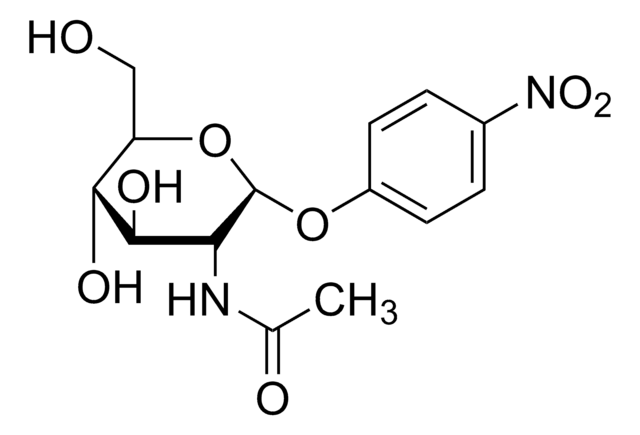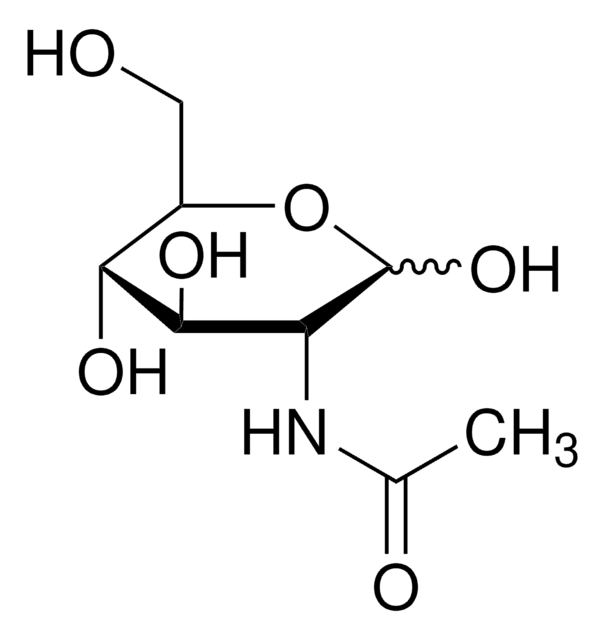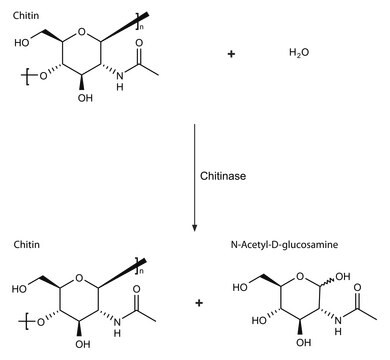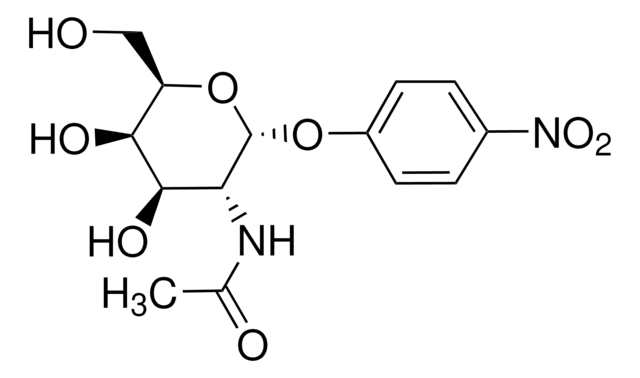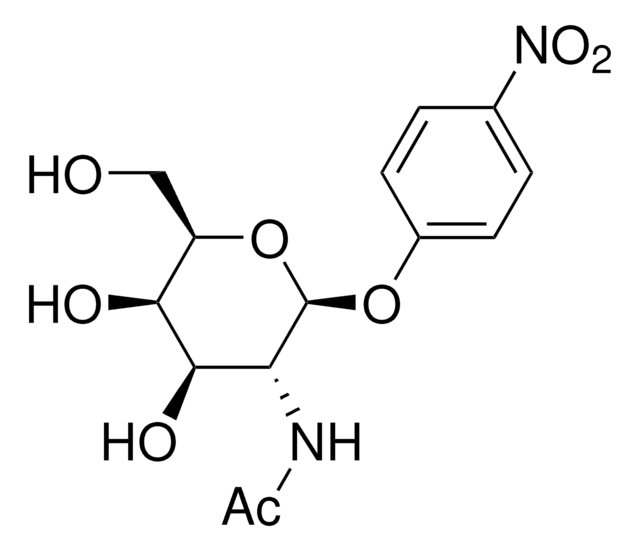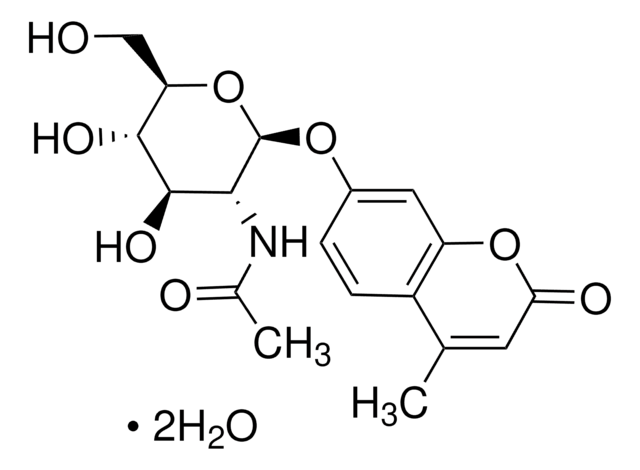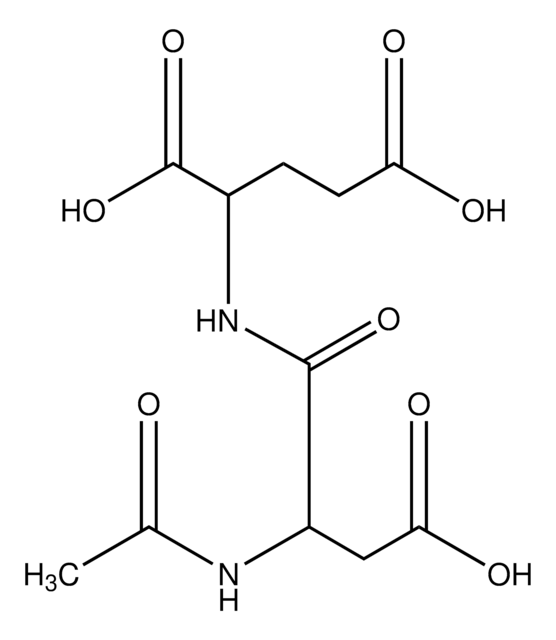10875406001
Roche
N-Acetyl-β-D-Glucosaminidase (NAG)
sufficient for ~50 tests
Sinônimo(s):
NAG
About This Item
Produtos recomendados
Formulário
solid
Nível de qualidade
uso
sufficient for ~50 tests
peso molecular
105.99 g/mol
fabricante/nome comercial
Roche
técnica(s)
activity assay: suitable
cor
white to light yellow-brown
solubilidade
water: soluble ~210 g/L at 68 °F (Stop reagent)
soluble ~71 g/L at 32 °F (stop reagent)
water: soluble (Buffer substance, lyophilized substrate)
adequação
suitable for enzyme test
aplicação(ões)
life science and biopharma
temperatura de armazenamento
room temp
Descrição geral
Aplicação
Embalagem
Nota de preparo
- Buffer solution
Dissolve the contents of bottle 1 with 55 ml double-distilledwater. - Substrate solution
Dissolve the contents of bottle 2 with 55 ml solution I. - Stop reagent
Dissolve the contents of bottle 3 with 110 ml double-distilled water.
Storage conditions (working solution): Stability of solutions:
Solution II is stable for 1 month when stored at 2 to 8 °C, protected from light.
Solution III is stable for 1 month stored at 2 to 8 °C.
Stability of the sample:
The activity determination of the N-acetyl-β-D-glucosaminidase (NAG) should be carried out directly after collecting the sample. Turbid urines should be centrifuged and the supernatant decanted. NAG is stable for one week at 2 to 8 °C and for one month when stored at -15 to -25 °C.
Armazenamento e estabilidade
Outras notas
Somente componentes do kit
- Buffer Substance consisting of citric acid and potassium citrate
- Lyophilized Substrate consisting of sodium 3-cresolsulfonphthaleinyl-N-acetyl-β-D-glucosaminide and borax
- Stop Reagent consisting of sodium carbonate
Palavra indicadora
Danger
Frases de perigo
Declarações de precaução
Classificações de perigo
Eye Irrit. 2 - Repr. 1B - STOT SE 3
Órgãos-alvo
Respiratory system
Código de classe de armazenamento
6.1C - Combustible acute toxic Cat.3 / toxic compounds or compounds which causing chronic effects
Classe de risco de água (WGK)
WGK 2
Ponto de fulgor (°F)
does not flash
Ponto de fulgor (°C)
does not flash
Escolha uma das versões mais recentes:
Já possui este produto?
Encontre a documentação dos produtos que você adquiriu recentemente na biblioteca de documentos.
Os clientes também visualizaram
Nossa equipe de cientistas tem experiência em todas as áreas de pesquisa, incluindo Life Sciences, ciência de materiais, síntese química, cromatografia, química analítica e muitas outras.
Entre em contato com a assistência técnica



